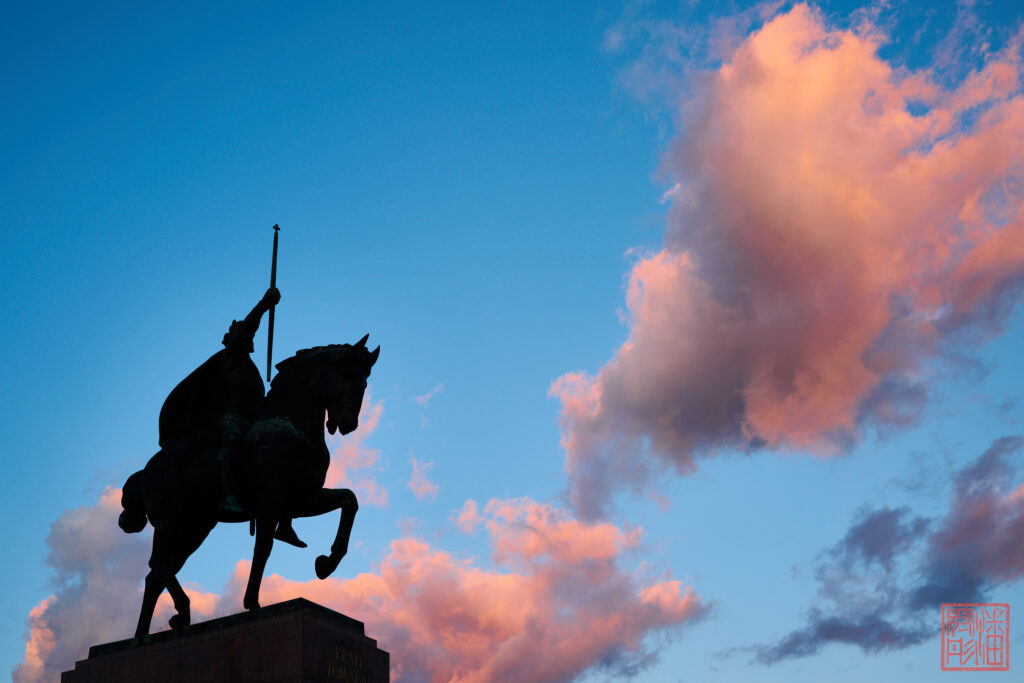The waterfalls at Plitvice National Park is world wide known and I have been long thinking about coming here to take my opportunity to take a few photos. I choose to come here in winter instead of any other seasons because of the following two reasons: First, I have seen many pictures of Plitvice waterfalls pictures in any other seasons already and since the view is fixed, I don’t expect that I can take any different ones. Second, it’s a very popular tourists spot and overcrowd most of the time. Therefore, I was hoping that I could take some winter sceneries and, in the mean time, avoid the crowd.
What I didn’t expect was that the park was half closed by the time I get there due to heavy snow so I only had a chance to visit the lower half of the park. Even though it’s not as crowded as other seasons through a year because most of the hotels and restaurants were closed during the time I was there. However, still I could hardly get a very quiet moment to take my shots. Since it’s a well known park, it has well established wooden boardwalk for tourists. Wood vibrates and taking photos with waterfalls need long exposure time with tripod. Crowds footsteps cause vibration and wood conducts vibrations. More often than not, I must wait for 3-5 minutes or longer for a right moment to click on the shutter release to avoid the vibrations and usually I would take 3 – 4 shots for one scene. The cost of time is very expensive. Lower half of the park really wasn’t that big but it took me two days to finally satisfy my appetite. 🙂


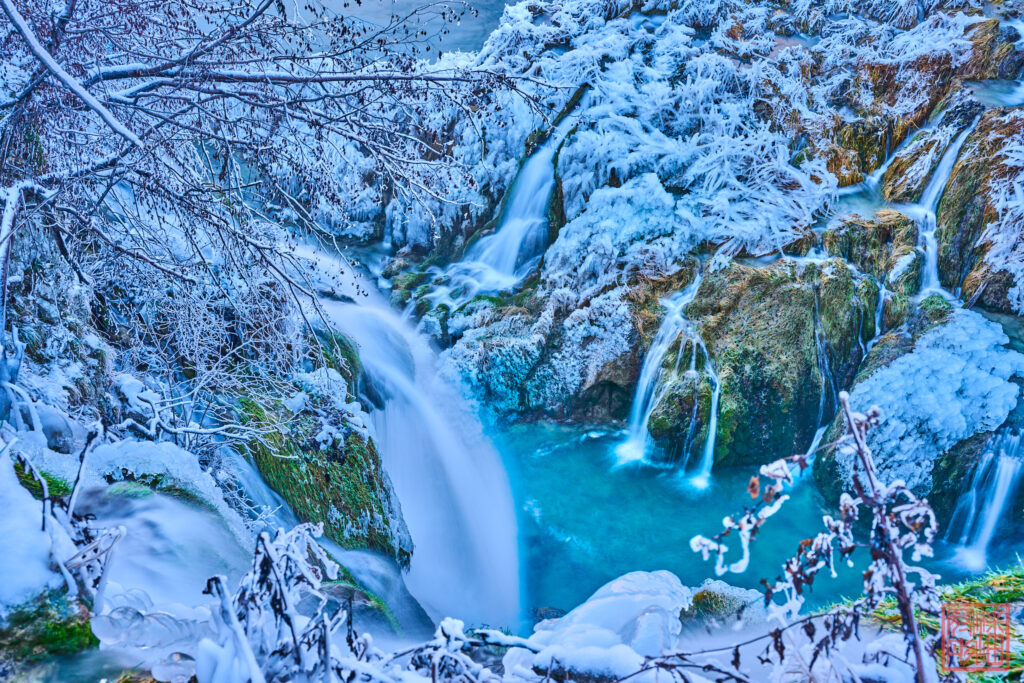


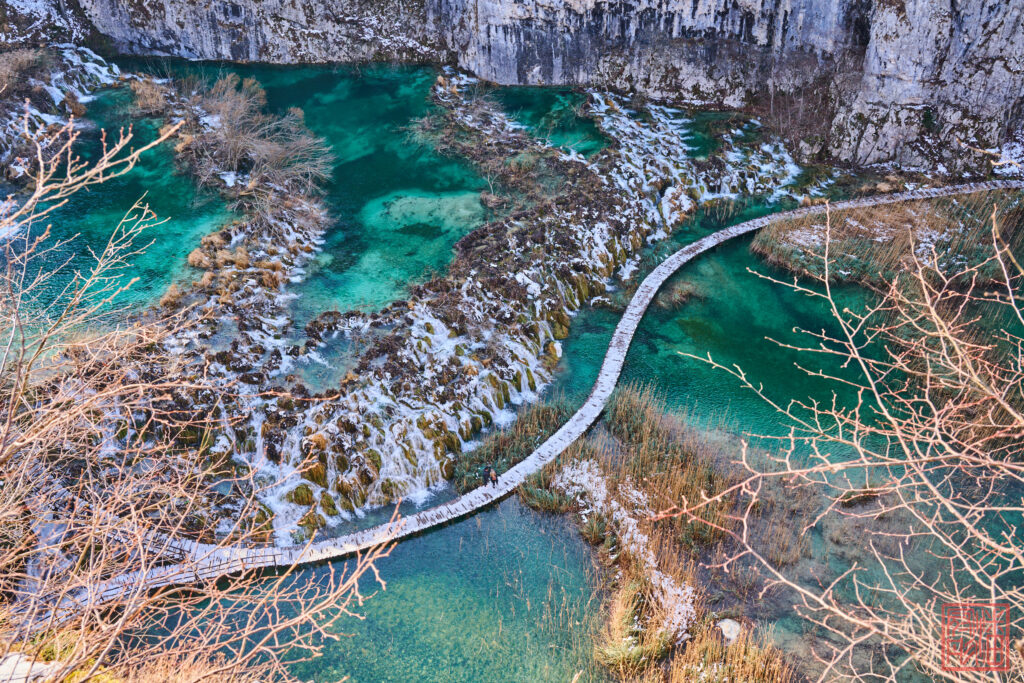
I was very confused the entire time when I was taking this picture at Krka National Park because why would these tables set up in the middle of a stream? Is this a mistake? If it is a mistake, it’s a bit too far-fetched. Or, is the water going to dry up when the tourists season come? Not until I was doing the post process at home in a much more relaxed atmosphere it suddenly dawn on me, how cool is it to have a beer in hand and bare-foot in cold stream to fight the blazing summer heat surrounding in such a beautiful natural scenery at Krka national park? What do you think?

A big difference between the Plitvice and Krka National Parks is unlike Plitvice Krka’s attractions are spreading out through the park and having some distance among them from 20 minutes drive to close an hour. This Serbian Monastery is also one of Krka NP’s view stops.

I saw this beautiful spot on my way driving down the valley to the Serbian monastery but I didn’t stop and take a shot because I was so focused, which may or may not be a good thing, in getting to my destination, the monastery. However, I promised myself that I would come back to this spot on my way out. I then spent close to 2 hours walking around the monastery. By the time I came back to this spot, it became even more beautiful because the sun shifted and the angle of the light was even better to make the color of the waters more vivid and vibrant. It turned out this is actually the best shot of the monastery collection which took me like one minute to get. I was very content with the outcome. 😃
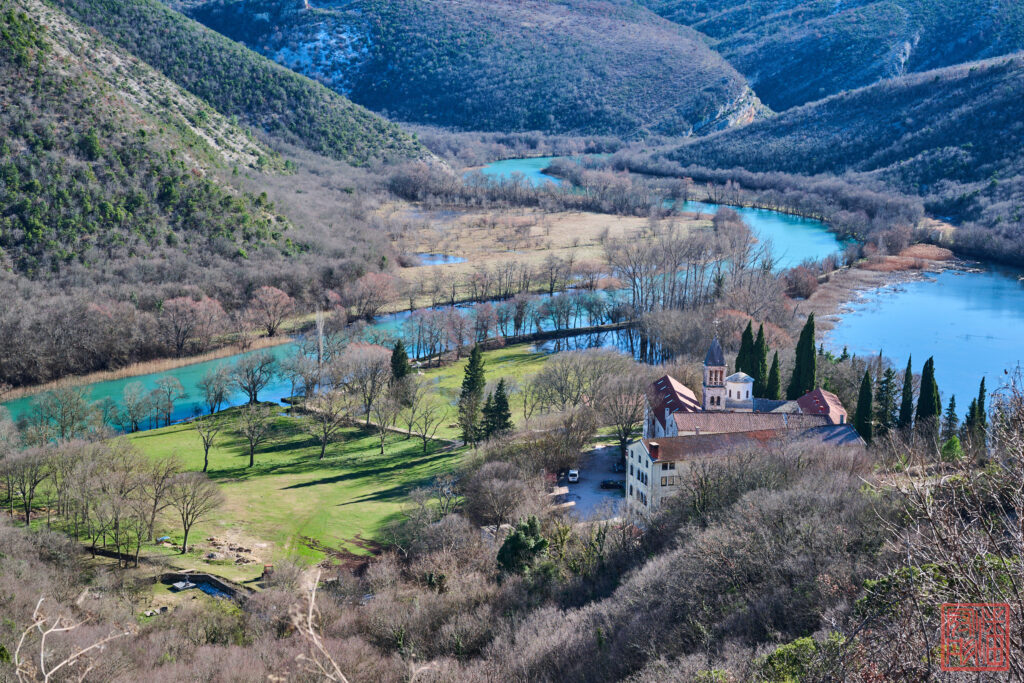
Frankly speaking, this group of waterfalls are very unique and beautiful but it’s far from the main attraction in Krka NP so not too many people visit here. I spent any where from two to two-and-half hours there and didn’t see another soul around, even the ticket booth was empty. Moreover, there is no facility and trail leading to the falls and, unfortunately, this is the closest view point I could get to.


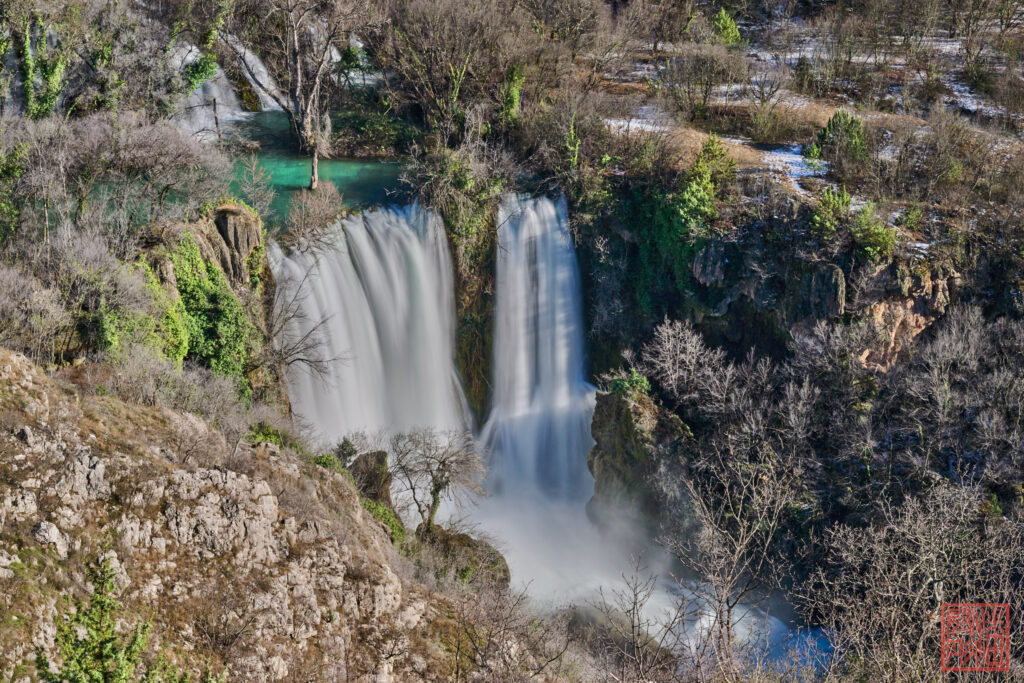

I know it’s a bit difficult to see but the moon is in the middle of the left side sky in the following photo. If you were there, the view was much more stunning and beautiful. The super wide angle lens, 27mm, to capture this view weaken the size of the moon to make it way too small and obscure to be seen clearly and dramatically. After I took those 4 photos in the last paragraph, I was tired, hungry and even thirsty. I couldn’t wait to get back to my car to munch on some snacks and sip some water. Just as I was getting close to the parking lot, I suddenly saw the moon. I stood there struggling with myself for like 30 seconds. I am way too tired and thirsty to walk back down that hill to re-take the view again with the moon in the frame and then climbed up the hill again. I tried to convince myself just forget about it. On the other hand, I don’t think I would ever be back here for this lifetime and I will miss it forever if I don’t get it now. I can’t stand for the idea that I see it but don’t get it and then I know I would regret it. So, I walked back down the hill dragging my feet, set up my tripod once more and took it. I know the result wasn’t as satisfy as I expected because of the wide angle lens effect but at least I get it and I could recall the experience when I got it. The result is only half the story, the experience is another.
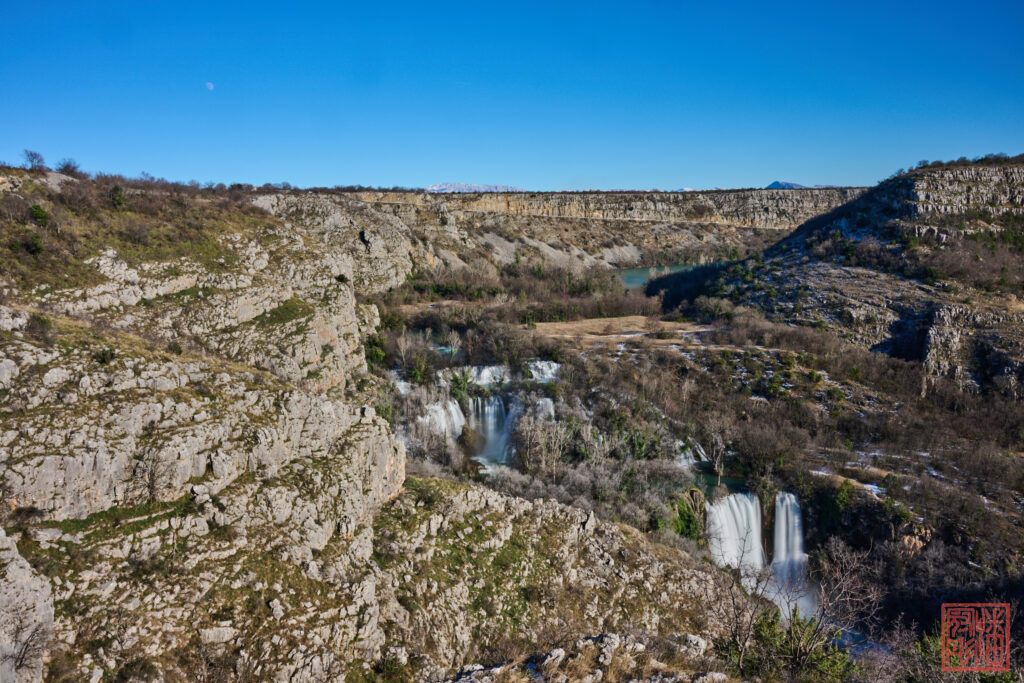
The church with a round roof on the right is a Pre-Romanesque Catholic Church originating from the 9th century. The left one with a tipping point is the new one and currently in use. Both are located in a small town named Nin.
Switzerland is not that far from Croatia but there are many big differences between them. In Switzerland anyone could enter almost any church. Unfortunately, In Croatia is the opposite. Unless there are activities or located at a busy tourist spot, all churches, new or old, are tightly locked and I can’t see what’s inside.

After visited numerous elegant and magnificent churches or cathedrals in Europe, these small, simple and plain churches gave me a mixed feeling of cozy, realistic and human. Just imagine those immigrants in the early times. They came from different sources to this strange and foreign land and built this church together because of nothing but the same reason, their common belief. There are no dramatic sculptures, elegant paintings and magnificent decorations but white walls, simplest structures and barely large enough to harbor local believers. The small and simple church shelter them from the elements and people chanting, preying and asking for blessing together under its roof. It paints such a warm, cozy and substantial image in humanity. This is why as long as I see one along the way when I was traveling, I couldn’t help but stop and take a few images because I celebrate the bright side of humanity. In this “on-line” and “AI” age, it is increasingly difficult to distinguish between fake and real, we need some true humanity.
Unfortunately, all these historic small churches are all tightly closed and locked when I run into them and I can’t really see what’s inside other than the Church of St. George, Vransko Jezero, in the following last two pictures. Luckily enough the right window of this historic church was open and I could stick my camera with a 12mm super wide angle lens to capture what’s inside. You might see even the left window was sealed with metal screen.

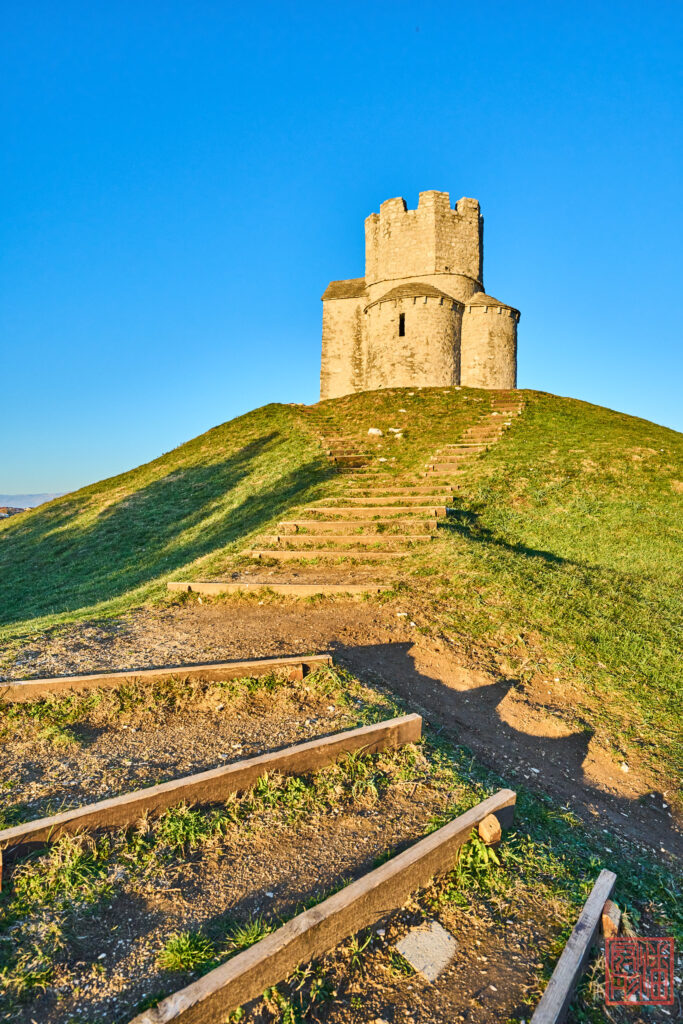
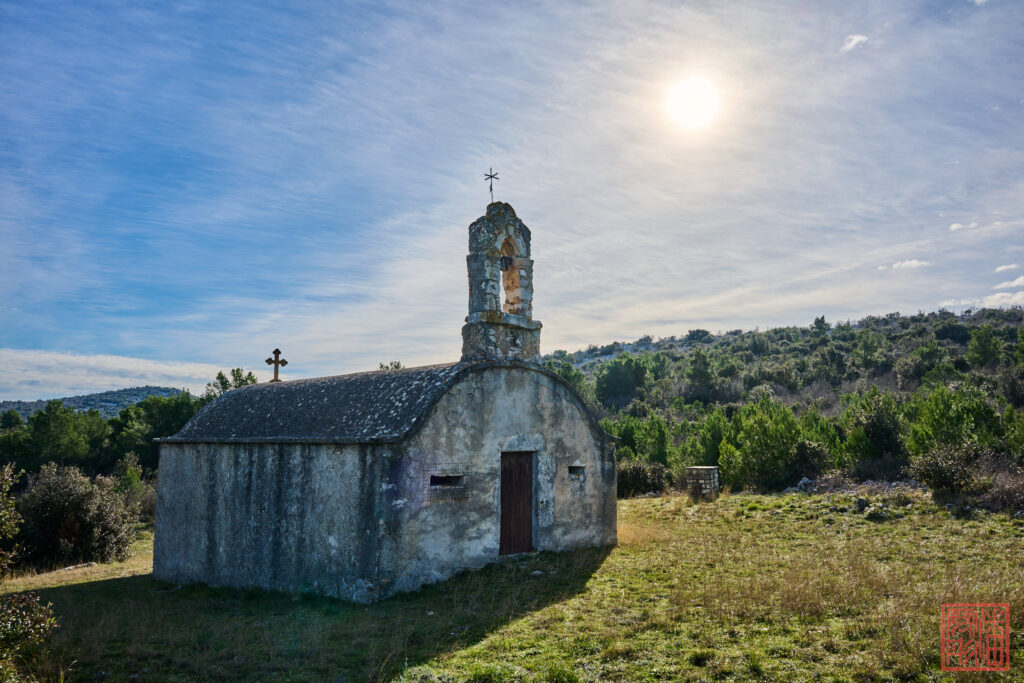
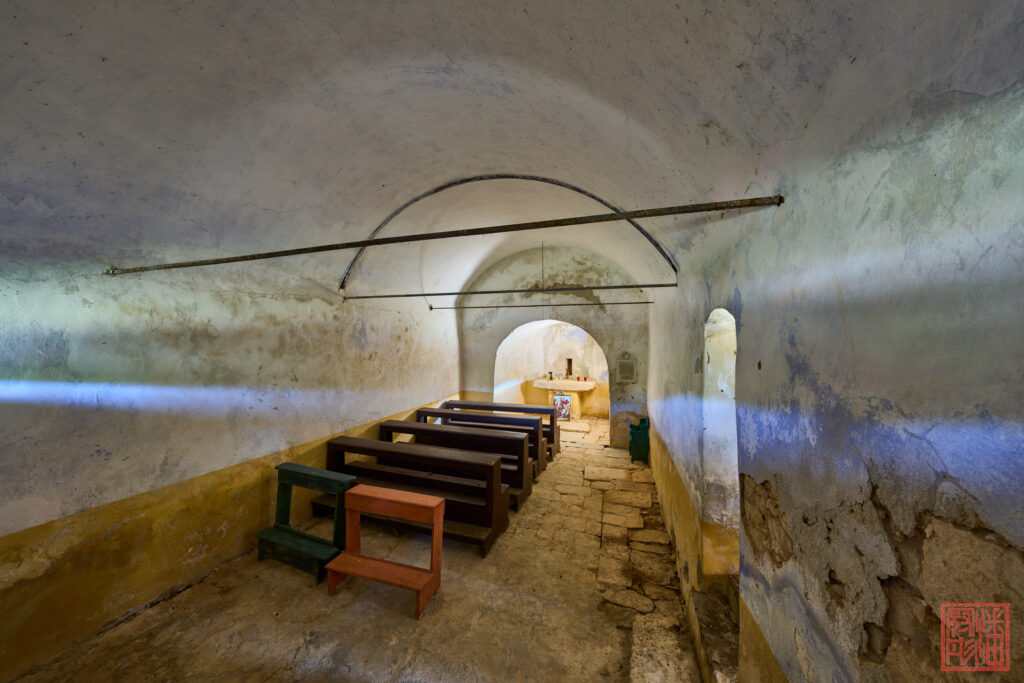
Honestly, I didn’t know Dubrovnik before I came to Croatia, I didn’t even know it after I came to Crotia till I was out of attractions to go to and studied my tour book. Of course, local people have also helped me out and I finally paid a visit and how lucky I am! It’s a magnificent city with rich historic attractions. From the collection of my images, you could tell I spent quite some time and effort trying to capture its essence. I have heard “Game Of Thrones” but never seen a sigle episode of it so these images are purely my personal interpretation of Dubrovnik. I hope you enjoy them.



Old City Walls of Dubrovnik
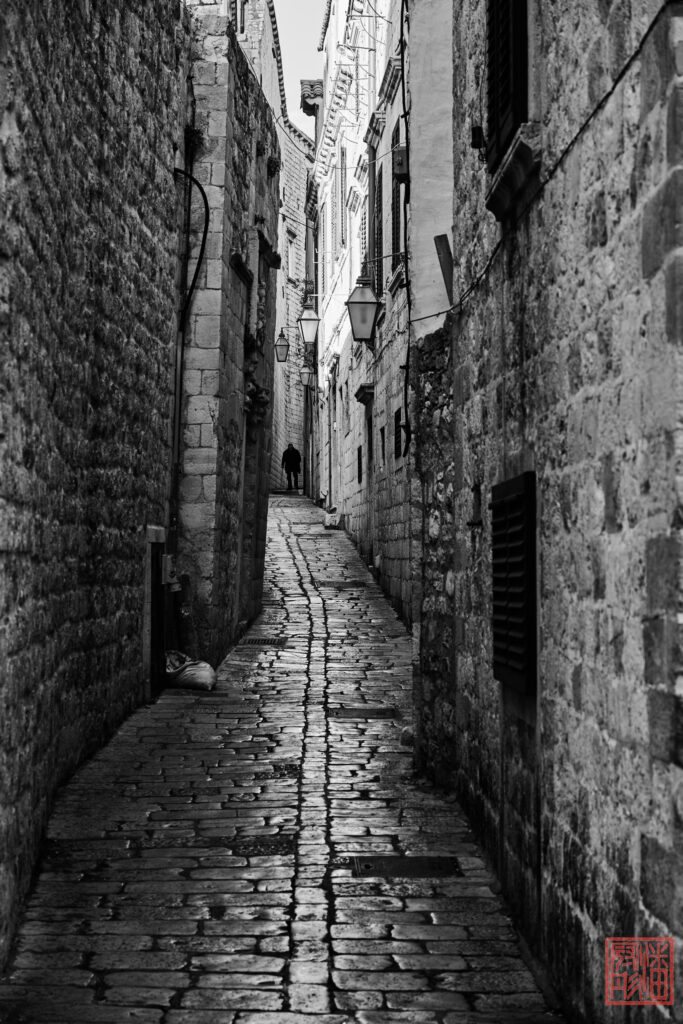
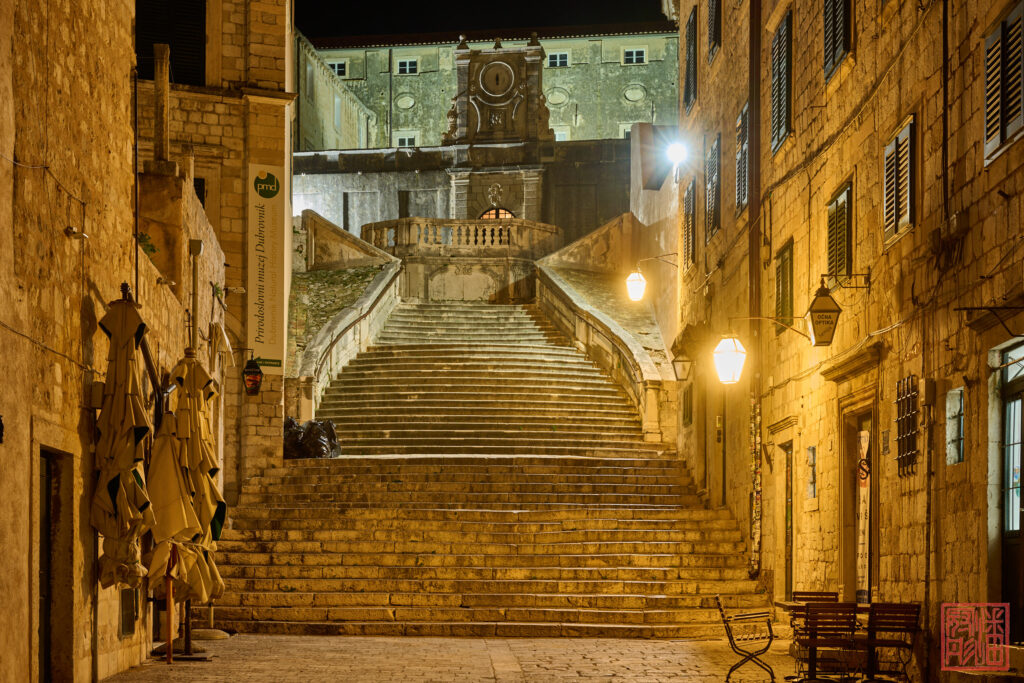
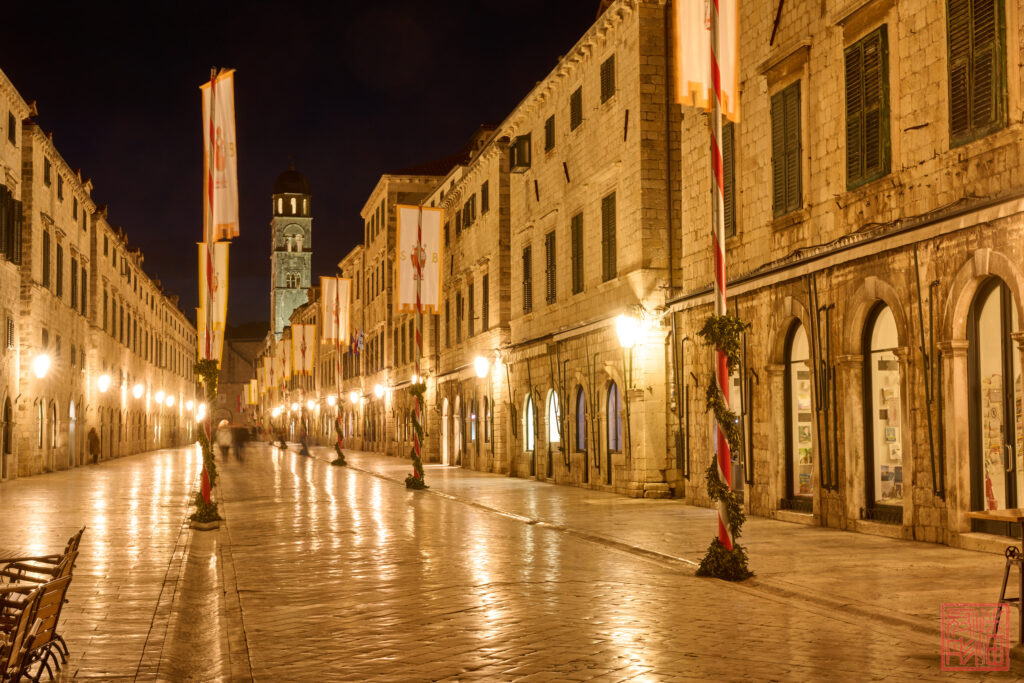
This is a panorama view of the old city wall at Dubrovnik. It is composed with 6 shots to form this one panorama view. I consider one of the best images I have from the city of Dubrovnik.

I am learning about Croatia as I traveling around it. I had no idea that Nikola Tesla was born and raised in Croatia till I flipped through my travel guide looking for more places to go. Tesla was born at a small town named Gospic as see following. As the matter of fact, his birth place was actually very remote from the town center. It’s about 10 km in distance and 12 minutes driving. More interestingly, there is no modern buildings in between the town and his birthplace but fields. His memorial and the church next to his memorial were the only modern structures in the field.
Tesla’s memorial has very rich collection about him including his inventions, biography, and literature. There is one floor devoted to some of his inventions with a warning sign at the entrance of that particular floor. The sign warns whoever is wearing a pace maker because the electricity of the demo instruments may cause it to malfunction.


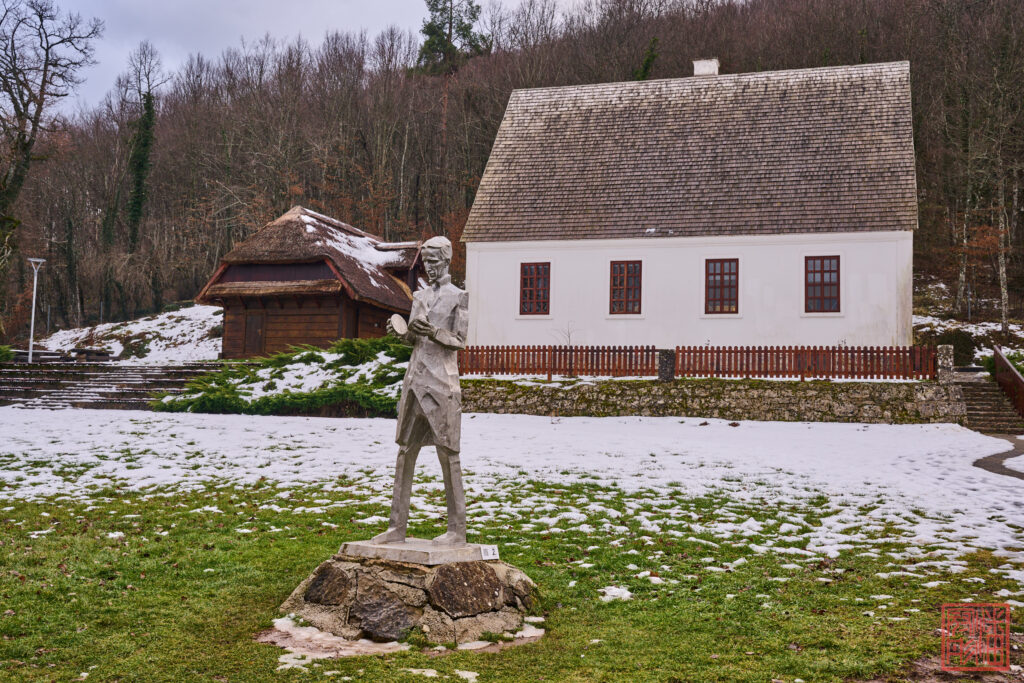


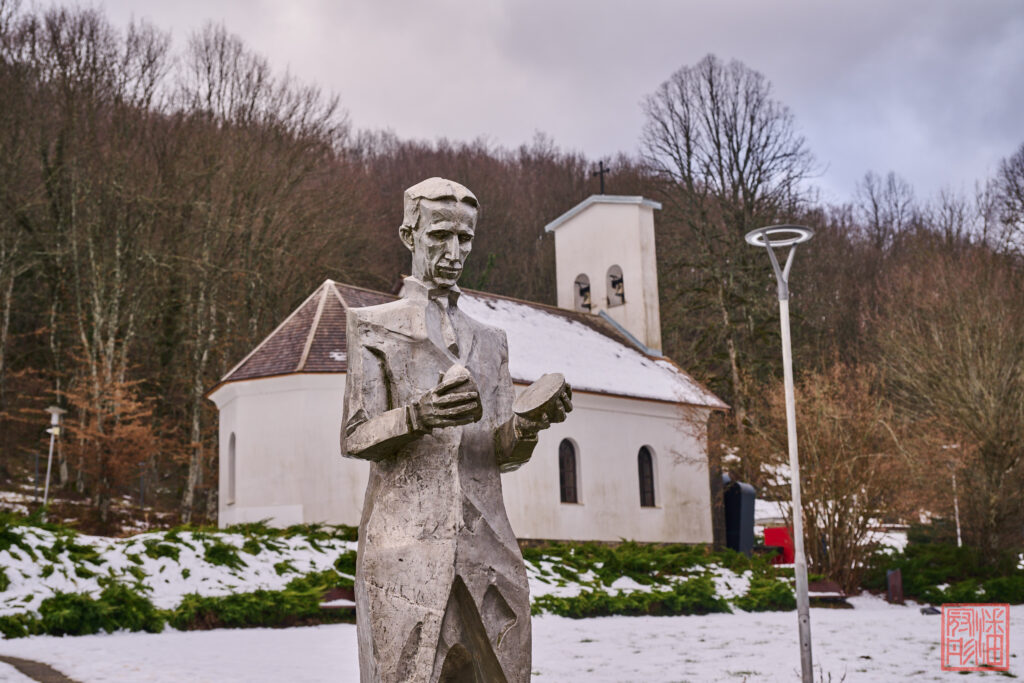
Not long ago I saw a short clip of video in introducing Roman amphitheater and learned that there are still roughly 200+ remained on this planet. I was very surprised that there are still so many of them exist. How lucky I am that I saw one at a city named Pula in Croatia. I will let my photos to express how impressive and magnificent it is.
According to the introduction sign, archaeologist couldn’t pinpoint the exact time for when it was built but agreed it’s between 100 B.C. and the mid of the 1st century. One of the evidences is that this amphitheater has oval shape which merely built in the early time. Only later has Roman Empire built round shape amphitheater. This is entirely new knowledge to me and I don’t even know that there are oval and round shapes available. Moreover, after the perish of Roman Empire in the 5th century Roman amphitheater followed the step of the empire and started to decay ever since. I have no doubt that there must be some re-modeling or re-building done to this one but that doesn’t hurt its authenticity and magnificence. This is absolutely another human marvel.


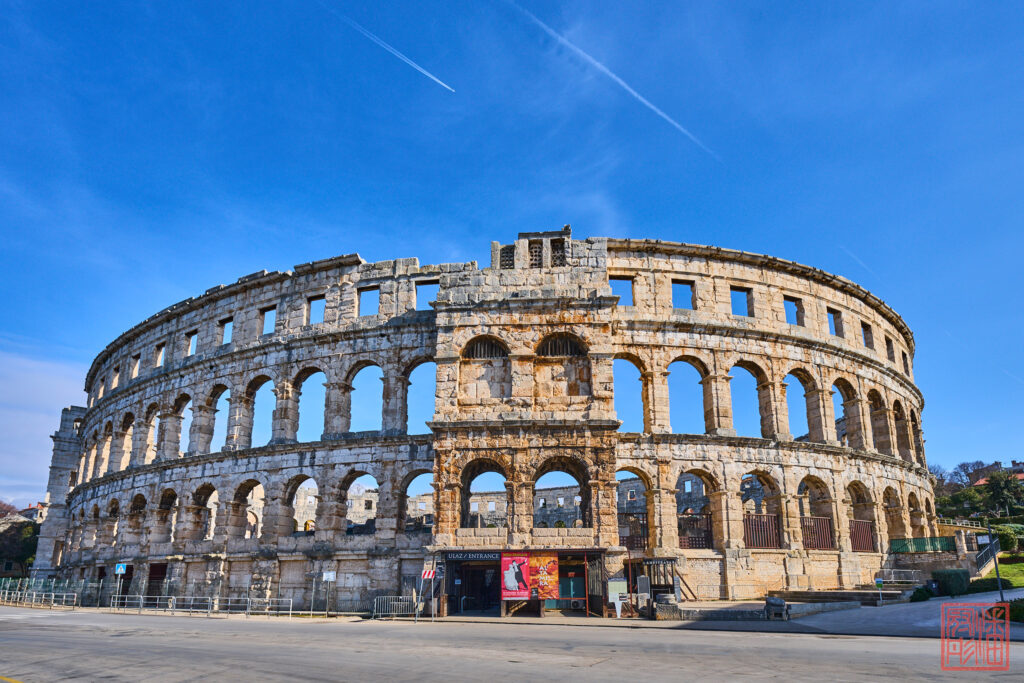
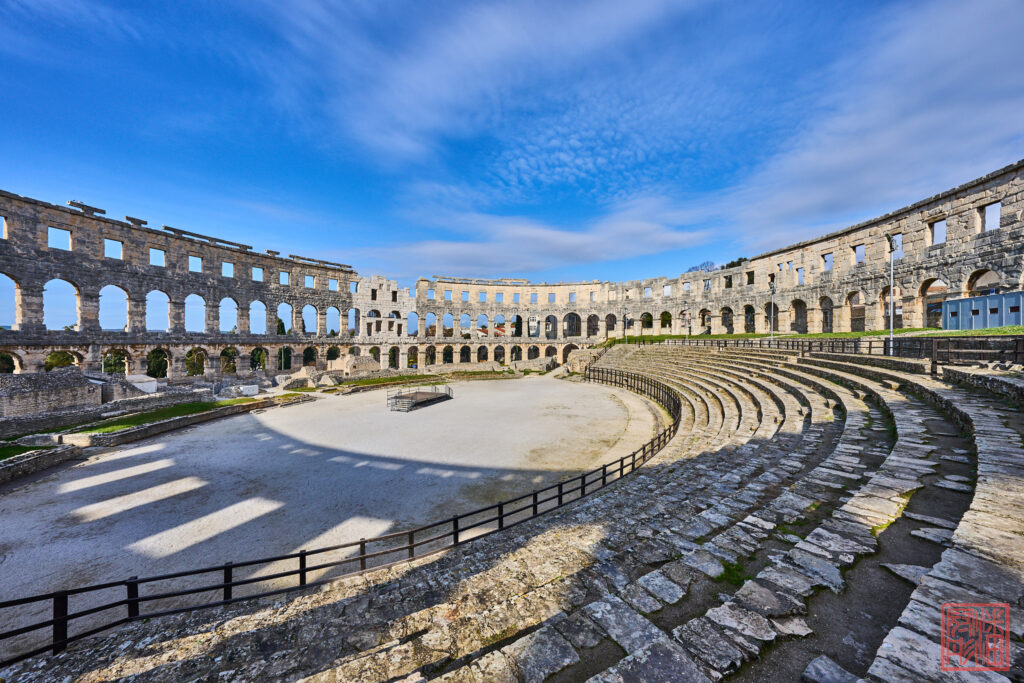
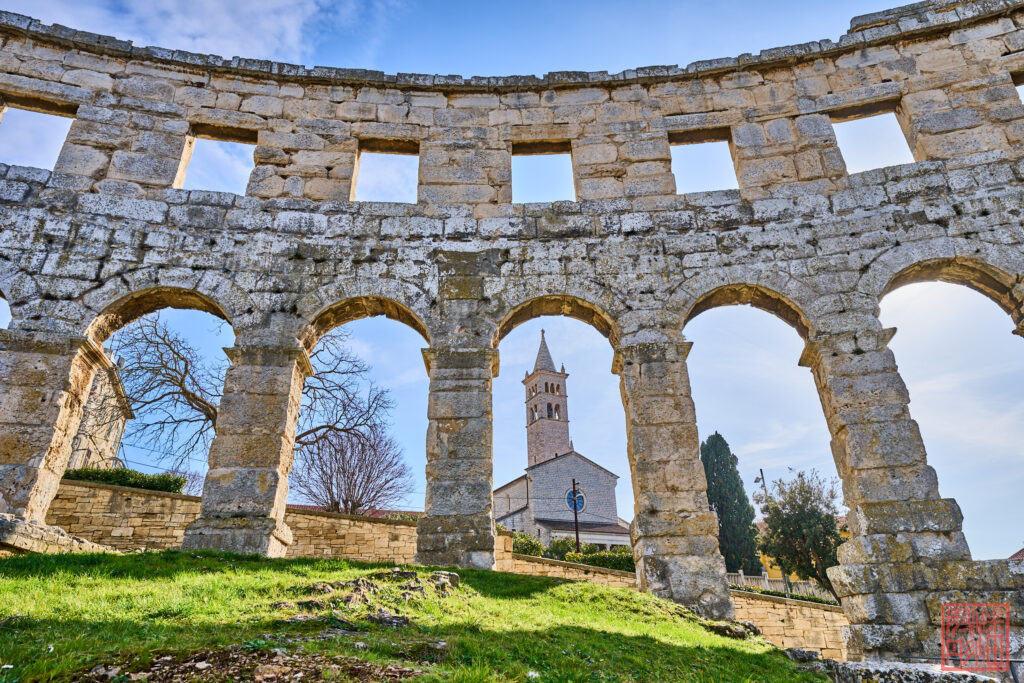
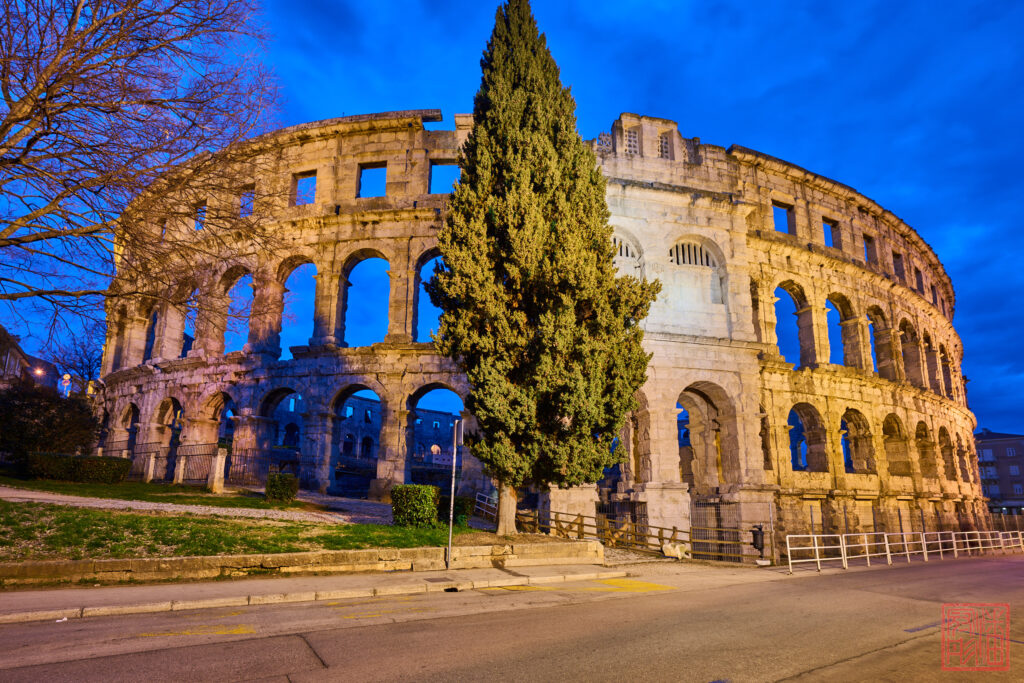
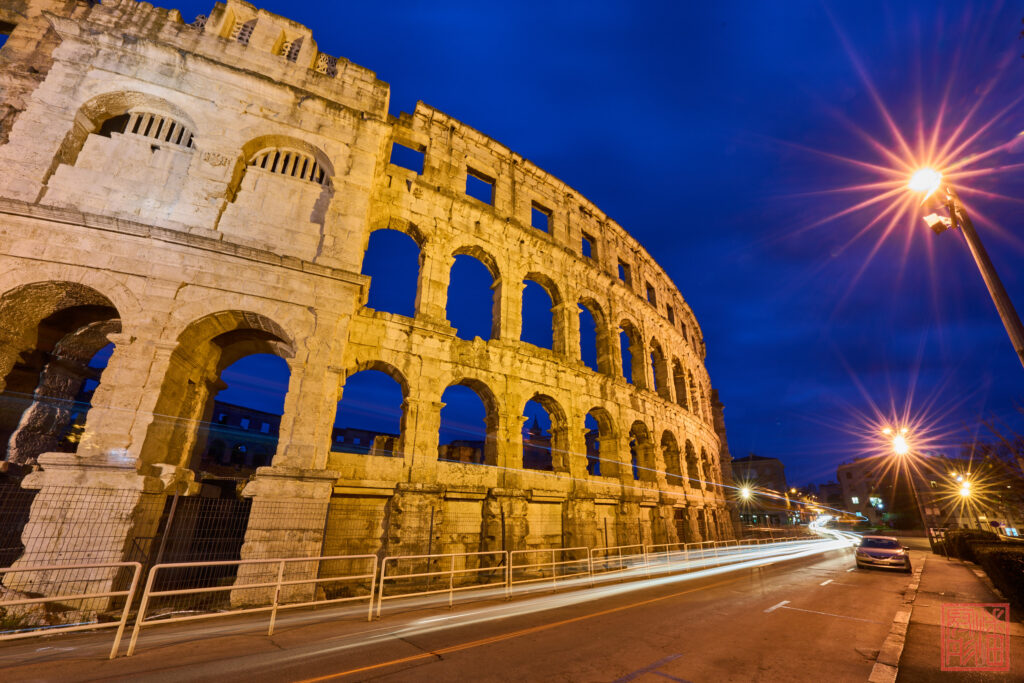
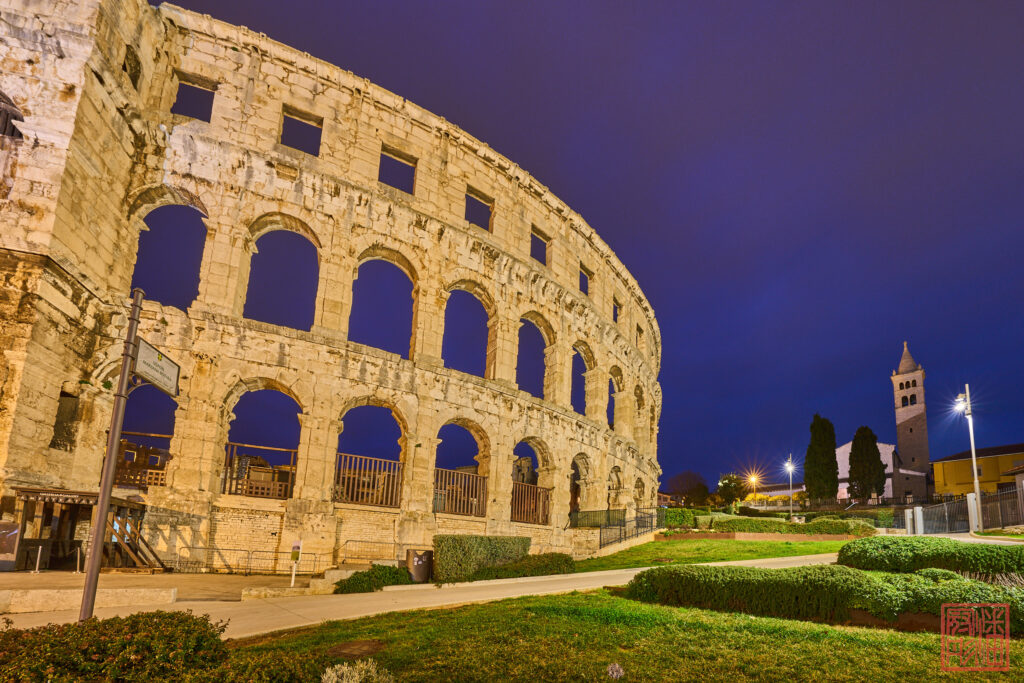
Note A.:
While I was flipping through my tour guide in Croatia back in February and saw the Croatia Amphitheater, there was something stuck in my mind. I couldn’t name what it was or what caused it but just something is not right. However, I couldn’t name what it was so I let it go at the time. On the other hand, every time I saw “Croatia Amphitheater” that feeling floats up from my mind. In the beginning of April while I was surfing the web a word “Colosseum” jumping in to my sight and I almost jumped up. I finally know why and what caused the mystery. I learned about Roman Colosseum all the way back in my elementary or junior high school and I learned it as “Colosseum”, not amphitheater. So, why it suddenly becomes amphitheater? Are these two words interchangeable or just different time and it is named differently? I asked on of my American friends and he also told me he learned it as “colosseum” while he was young.
Finally I did some research on Google and sure enough there are differences. First of all, the meaning of the word “amphitheater” means an outdoor, open-air venue used for entertainment, performance and sports. One very important feature is it’s a semi-circle building (including oval shape). On the other hand, a colosseum is composed with two amphitheaters face-to-face which becomes a circle or oval shape building. A colosseum is a type of amphitheater because it is composed with two of them but not all amphitheaters are colosseum because it’s only a semi-circle. Ah-ha, this resolved my question and there are differences.
Then my next question comes up: It’s a full oval shape building at Croatia then why was it called amphitheater not colosseum? Was it a mistake in my tour book? However, even the Croatia official document named it amphitheater. Why? I don’t think people in Croatia would make this kind of mistake since this is where the building is. Digging deeper and I found out that only “Flavian Amphitheatre”, the one in Rome, was called Colosseum and the others regardless the shape were called amphitheater.
Note B.:
Some comments on the web suggested that the reason why Flavian Amphitheatre was the only one named as Colosseum is because of Colossus of Nero who resided in the vicinity. It was actually a misunderstanding.
“Kapelica” is the name of this kind of structure in Croatia language and it has a very special way to pronounce it. I asked various Croatian and was told the closest translation to English should be “small church”. I don’t know if the word “shrine” is more adequate or not but that’s not the point. Usually it’s St. Mary worshiped in it because Croatia’s main religion is Catholic. They are relatively quite small in comparison with a church and seen on the side of the roads or at cross roads most of the time. Another interesting feature of this kind of structure is I couldn’t recall that I have seen them somewhere else in Europe. Croatia is a very religious region and there are kapelica and churches everywhere.
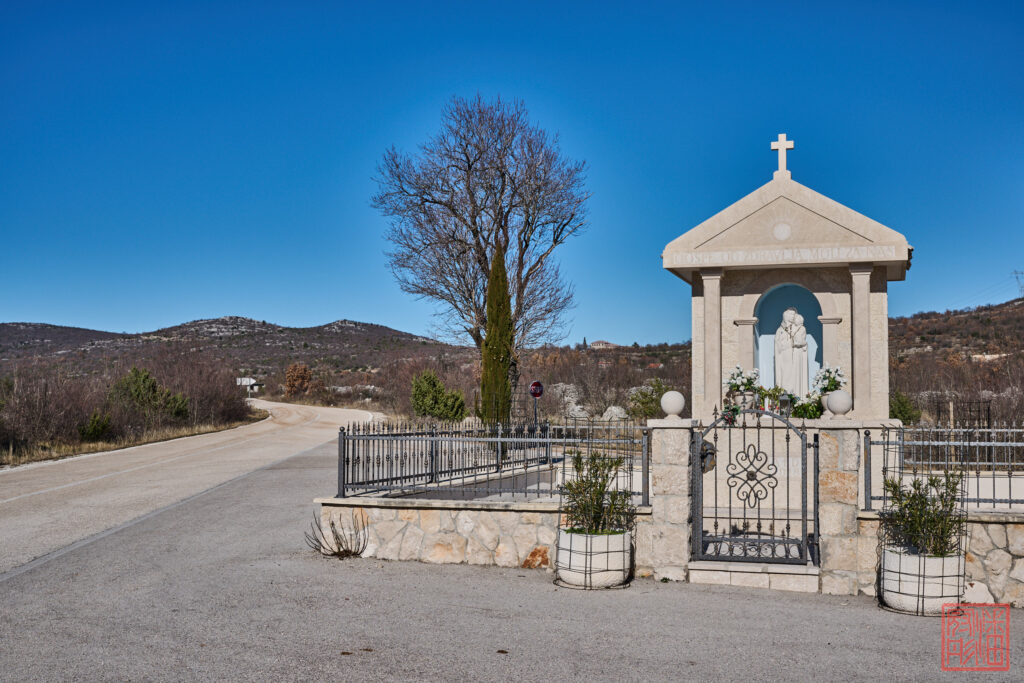
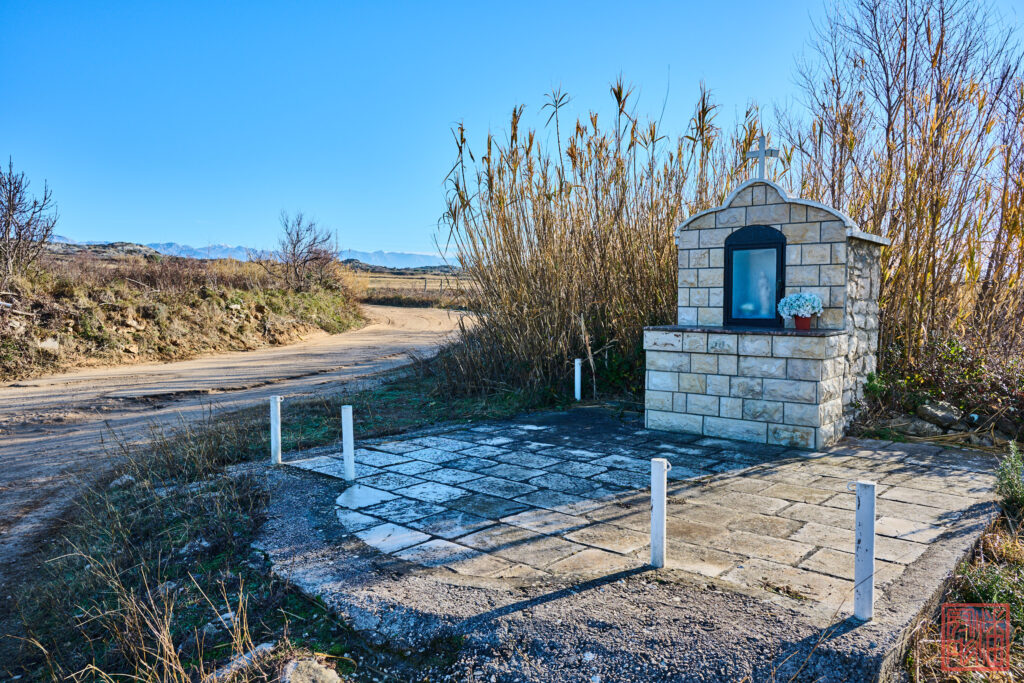

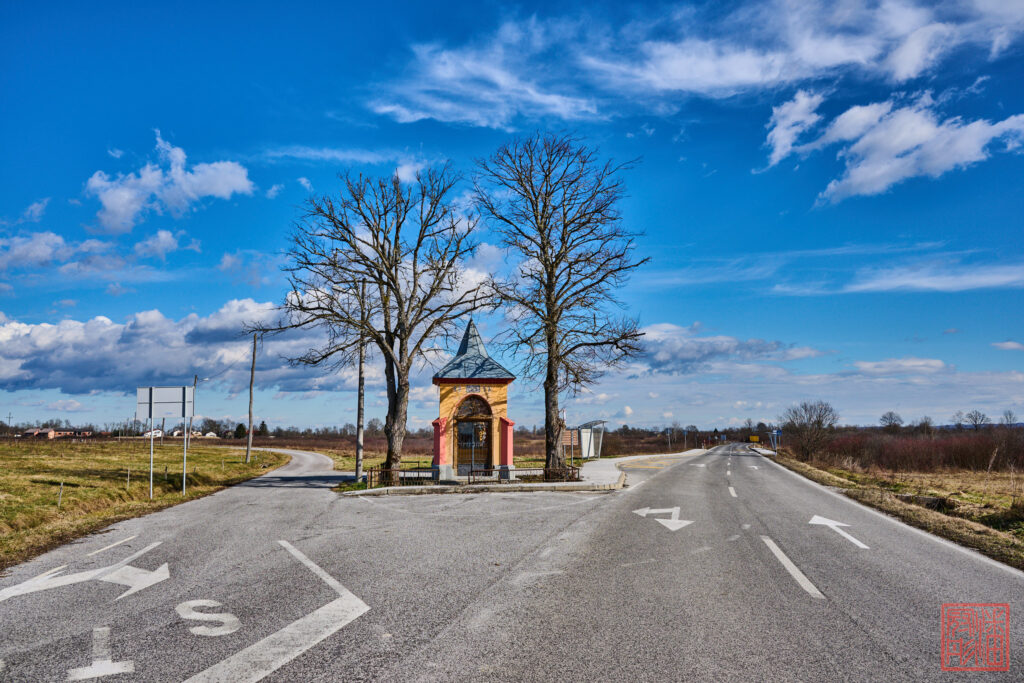
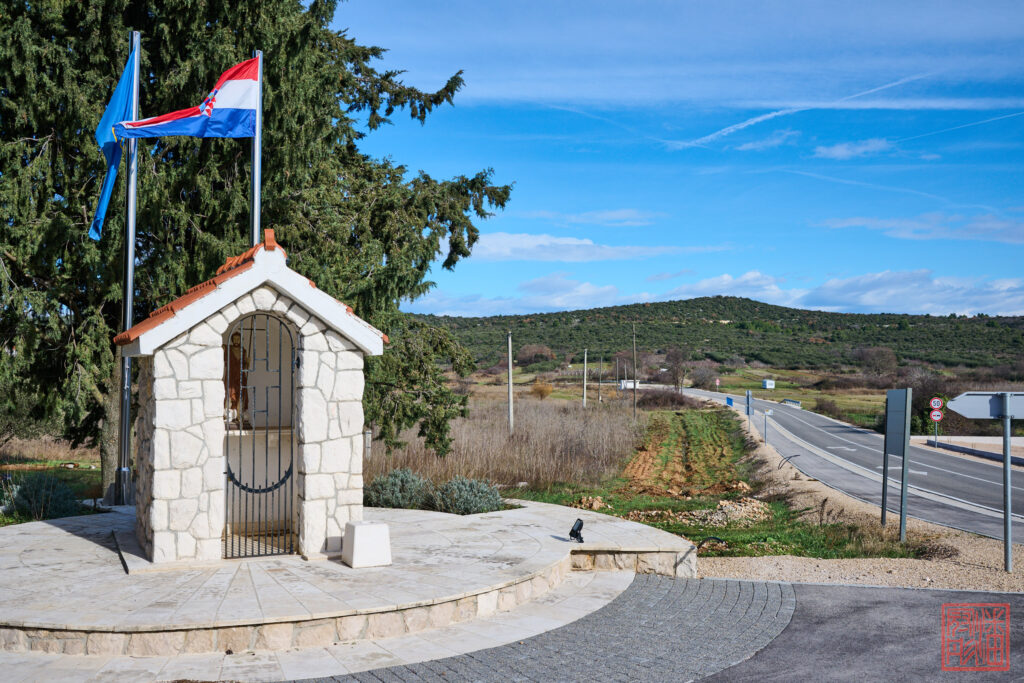

This is a beautifully designed and built church or temple because of its round roof. I don’t know any history behind, I took it as I saw it. I was driving along a small country road toward Zagreb and it suddenly emerging from the side of the road for a very brief of time then obscured by the hills surround it. I must make a U-turn to get back onto an even smaller road to get to it. It’s on top of a hill and the path was obscured almost hidden. There was no other buildings or any men made structures around it. It’s a church standing alone on top of a small hill. The nearest town or village is at least a couple of kilometers away. Everything is unusual about it because a church should be next to where people’s gathering is or even town center. I walked up the hill only realized that it is decayed and ruined for some reason that I don’t know. The walls were full of cracks and three out of four column were fall. The remaining one was also in grave danger. My guess is an earthquake caused the damage but no way to prove that theory.
Without touching the structure, I took a peek inside it from the wall cracks and it’s empty, entirely empty. Honestly, I didn’t touch the wall at all because I was so afraid that if I did, it would crumble down into a pile of bricks and dirt. It’s stripped down to bare walls, floors and altar. There is only fallen leaves, branches and dirt. I took a few shots just because it’s such a beautiful image, a well designed, built and cracked church in a forest far from crowds, noise and any modern pollution. The surrounding was so quiet, so still and so lonely. You feel nothing but breeze caresses the earth, hear nothing but tree leaves welcoming, and the sunshine warming you as a whole.


When I clicked on the shutter release, there were two ideas emerging in my mind:
- There is some Devine power up there to observe, oversee what we human beings are doing: good or evil. We don’t usually know when, where or who is observing or overseeing us but it’s there, it’s always there and metaphysics. We could also interpret that it’s our conscience observing and overseeing our behavior to steer us from evil to good or vice versa. The angle in this image is merely a symbol and it could be any Devine power or our conscience, no matter, as long as we know it’s there even though we don’t see it and it’s hidden which is why it’s in the dark shadow.
- Never forget that Satan was once the archangel of God in the religion of Christianity. Before it turned and fall into the darkness, we never know and it’s hidden just like in this image. On the other hand, we could also comprehend it as there is not only the bright side of humanity but also the dark side. It’s like Yin and Yang, they are intertwined and symbiosis.
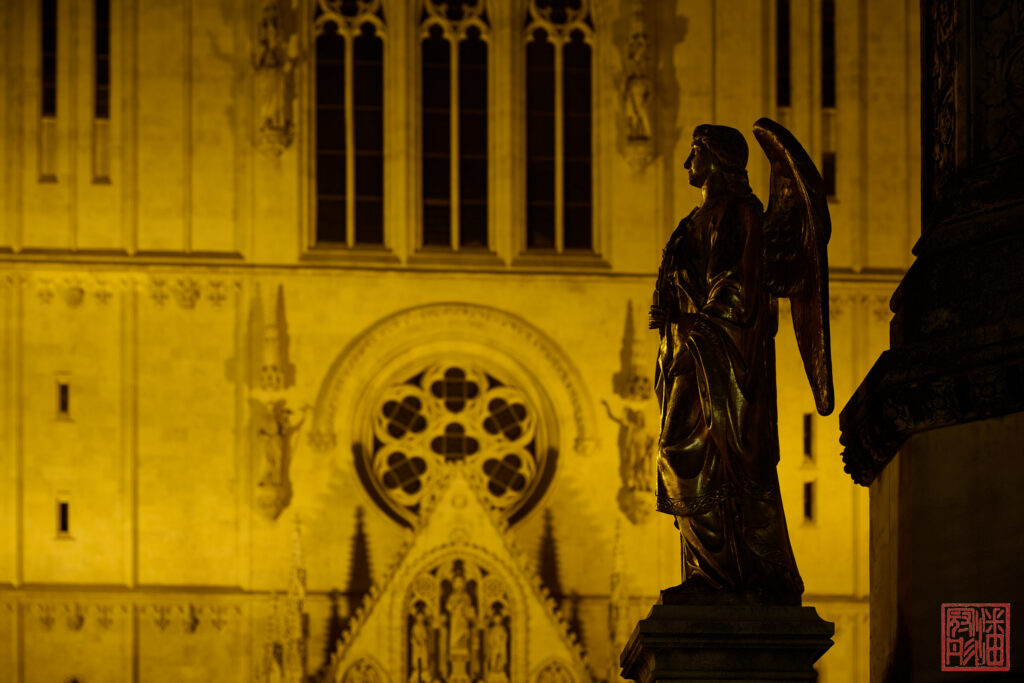
Let me use this image of King Tomislav’s monument to conclude this trip to Croatia. I have always said that there are many causes to decide a successful image but the prerequisite is the photographer must “Be There”. This image is an example. I left Lovran in the morning that day and drove all the way to Zagreb. The distance wise actually wasn’t that far but I stopped numerous places to take photos which takes time and energy. When I finally arrived the hotel at Zagreb suburban area, it’s was 2:00pm already. Frankly speaking I was tired and contemplating the idea of taking a nap before heading out. I vetoed the idea because it’s still winter time and there wasn’t much daylight remain. I took a bus heading into Zagreb, the capital. Of course, the bus was late and ran into heavy traffic. I was getting nervous, very nervous, because I was losing light and losing it quickly. If you have been to Zagreb, you would know after you get off the bus at the main bus terminal you must walk through a pedestrian underground tunnel to get to the city. As I emerged from the tunnel, I saw the red cloud. It’s one of the best background an outdoor photographer could hope for. I knew immediately that I have a perfect background and badly urgent in need of a foreground or a subject. The existence of the sunset red cloud lasts only in tens of seconds. I looked around and locked my sight on the statue about 50 meters or so from me. Without thinking twice, I started to run, run like nuts with tripod and two camera bodies on me. At the moment, I don’t know who that was for the statue but it made a good foreground. I stayed at the same hotel for the following 4 days, came to the same spot 7 or 8 more times in various time during the day and the weather and light never turned out as good as that evening. “Be There” is essential and I can’t emphasize it more. This is the final product of that moment and I couldn’t be more happier.
